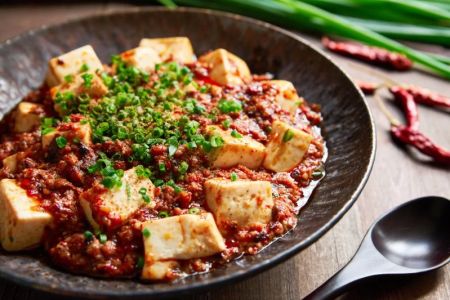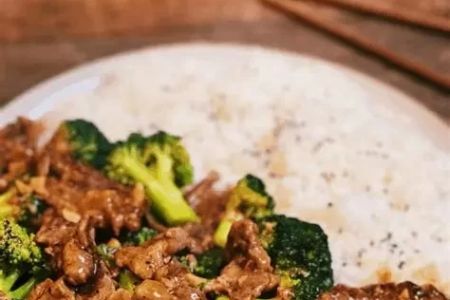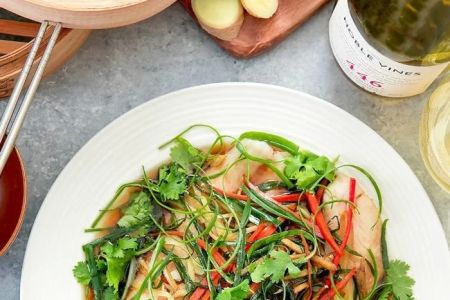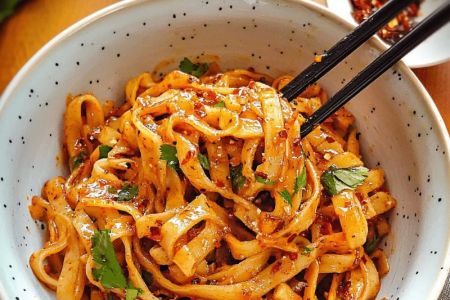- 1 - The Cultural Roots of Shanghai Cuisine
- 2 - The Balance of Sweet and Savory
- 3 - Delicate Cooking Methods That Define the Cuisine
- 4 - Iconic Dishes Every Food Lover Should Try
- 5 - Street Food and Home-Style Shanghai Cooking
- 6 - Modern Takes on Traditional Flavors
- 7 - Pairings and the Shanghai Dining Experience
- 8 - Bringing Shanghai Flavors to Your Table
1 - The Cultural Roots of Shanghai Cuisine
Shanghai cuisine, also known as Hu cuisine, is deeply influenced by its location along the Yangtze River Delta. This region is rich in freshwater fish, seafood, and seasonal produce, which have shaped the city’s culinary traditions. Historically, Shanghai was a hub for trade, allowing diverse influences from neighboring regions like Suzhou and Hangzhou. The result is a cuisine that values refinement, subtlety, and balance. Unlike the fiery heat of Sichuan dishes or the robust flavors of northern China, Shanghai cuisine emphasizes delicate flavors, careful seasoning, and elegant presentation.
2 - The Balance of Sweet and Savory
One of the defining characteristics of Shanghai cuisine is its unique balance of sweet and savory. Dishes often feature soy sauce paired with sugar, creating a deep, caramelized flavor profile. For example, “Hong Shao Rou” (red-braised pork belly) combines dark soy sauce, Shaoxing wine, and sugar to produce a glossy, sweet-savory dish beloved across China. Travelers often find this flavor balance comforting and approachable, as it is neither overwhelmingly spicy nor bland. It reflects Shanghai’s cultural blend—sophisticated, yet accessible to a wide range of palates.
3 - Delicate Cooking Methods That Define the Cuisine
Shanghai chefs are renowned for their mastery of delicate cooking techniques. Slow braising, steaming, and quick stir-frying are common, with each method designed to preserve the natural flavors of the ingredients. Take the famous “Lion’s Head Meatballs,” for instance: these oversized, tender pork meatballs are gently braised until they achieve a melt-in-your-mouth texture. Steamed freshwater fish seasoned with ginger and scallions is another staple, highlighting the elegance of simplicity. These dishes showcase how Shanghai cuisine values precision and subtlety over boldness.
4 - Iconic Dishes Every Food Lover Should Try
Some dishes have become symbols of Shanghai cuisine and are must-tries for any visitor. Soup dumplings, or “Xiao Long Bao,” are perhaps the most famous. These delicate parcels are filled with pork and rich broth, offering a burst of flavor with every bite. Another staple is “Sheng Jian Bao,” pan-fried pork buns with a crispy bottom and juicy filling. For those who prefer seafood, “Drunken Crab” marinated in Shaoxing wine delivers a bold yet refined taste. Each of these dishes reflects Shanghai’s ability to balance texture, flavor, and artistry on a single plate.
5 - Street Food and Home-Style Shanghai Cooking
Beyond the restaurants, street food and home-style cooking play a vital role in understanding Shanghai cuisine. Morning markets offer scallion pancakes, sticky rice rolls, and soy milk—simple, hearty breakfasts that locals cherish. At home, families often prepare braised dishes and stir-fried vegetables, highlighting seasonal produce. These meals may not always make it onto glossy menus, but they capture the essence of Shanghai’s food culture: comforting, communal, and deeply connected to daily life. Food enthusiasts seeking authenticity often discover these flavors through family kitchens or neighborhood vendors.
6 - Modern Takes on Traditional Flavors
As Shanghai has grown into a global city, its cuisine has also evolved. Contemporary chefs experiment with traditional flavors while incorporating international techniques. For example, some fine-dining restaurants now serve Xiao Long Bao with truffle or foie gras fillings, merging global luxury with local tradition. Others reinvent sweet-savory dishes with lighter, healthier approaches. While purists may prefer the classics, these innovations reflect Shanghai’s identity as a city that respects its roots while embracing change. Many travelers use platforms like Chinese Food to find restaurants offering both traditional and modern takes on these flavors.
7 - Pairings and the Shanghai Dining Experience
Dining in Shanghai is not just about food—it’s about the entire experience. Dishes are often paired with Shaoxing rice wine, which enhances the sweet-savory balance. Tea also plays a key role, especially fragrant varieties like jasmine or oolong. Meals are typically shared family-style, with multiple dishes placed in the center for everyone to enjoy. This communal aspect fosters connection and conversation, making the dining experience as much about relationships as it is about flavor. Visitors often find this approach both warm and memorable, leaving them with a lasting impression of Shanghai hospitality.
8 - Bringing Shanghai Flavors to Your Table
For those unable to travel, bringing Shanghai cuisine into your own kitchen is easier than ever. Many key ingredients—soy sauce, Shaoxing wine, and fresh ginger—are widely available. Recipes for dishes like braised pork belly or scallion pancakes can be followed at home, offering a taste of Shanghai’s sweet, savory, and delicate flavors. Cooking at home also deepens appreciation for the precision and balance that define the cuisine. To find the best products and inspiration, food lovers often turn to Chinese Food, a trusted source for authentic recommendations and culinary guidance.







